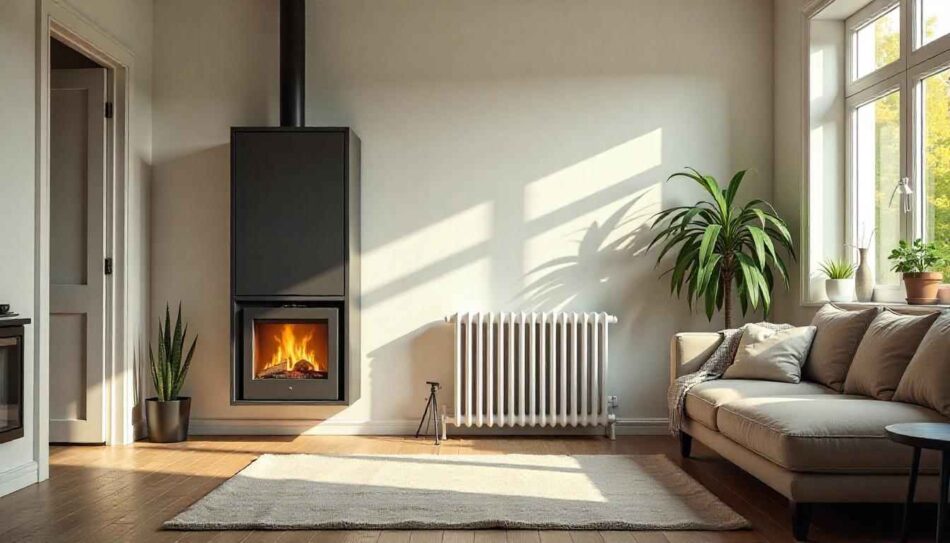Climate change has pushed many of us to rethink how we heat our homes. The system you choose can dramatically influence your household’s carbon footprint, long-term sustainability, and energy efficiency. It’s no longer enough to look only at upfront costs or even monthly bills; understanding how each heating method affects the environment is a crucial part of making a responsible, future-focused decision. Let’s explore how your heating choices shape your environmental impact, and how you can reduce emissions while still keeping your family warm and comfortable.
Combustion-Based Heating Systems
Systems that burn fuel — like gas furnaces, gas boilers, and wood stoves — have traditionally dominated the heating landscape. High-efficiency gas furnaces are significantly cleaner than their older counterparts, with AFUE ratings as high as 96%, but they still emit carbon dioxide and contribute to global warming. Gas boilers, commonly found in older homes with radiators or underfloor heating, perform well but similarly rely on fossil fuels.
Wood heaters can be carbon-neutral if wood is sustainably harvested, because the carbon released during burning roughly equals the carbon the trees absorbed while growing. However, wood combustion also releases particulates, which can damage local air quality. Urban areas, in particular, often ban or tightly regulate wood-burning appliances to protect residents from smoke and fine-particle pollution.
Electric Heating Systems
At first glance, electric systems seem perfectly clean. Electric boilers and electric furnaces convert 100% of the electricity they receive into heat, so there is no waste at the appliance level. But the real question is where that electricity comes from. If your local grid is powered by coal or natural gas, then the emissions simply shift from your home to the power plant.
The best way to make electric heating sustainable is to pair it with renewable energy sources, such as solar panels or a green electricity provider. This approach can transform electric heating into a genuinely low-carbon solution while preserving its simplicity and flexibility. You can find additional reading to explore how electric heating systems fit into a cleaner future.
The Promise of Heat Pumps
Heat pumps are often celebrated for their environmental benefits, and for good reason. By moving heat instead of creating it through combustion, they deliver three to four times as much heat energy as they consume. That means far fewer greenhouse gases are emitted, even if the electricity used to power them comes from fossil fuels.
When combined with renewable energy sources, heat pumps can provide near-carbon-neutral heating and cooling. Geothermal systems are even more sustainable, tapping into stable ground temperatures to maintain high performance regardless of outdoor conditions. Their underground loops can last up to 50 years, dramatically reducing the need for replacement equipment and lowering the environmental burden of manufacturing new systems. If you want to explore more details about the benefits of heat pumps, you can visit our website for a closer look.
Radiant Heating and Beyond
Radiant floor systems, whether powered by a high-efficiency boiler or electric coils, offer excellent sustainability advantages. By heating surfaces instead of air, they keep the thermostat set lower while delivering superior comfort, which means less fuel is burned or less electricity is consumed overall. This style of heating can be especially valuable in well-insulated, energy-efficient homes where heat loss is minimal.
Hydronic radiant systems combined with condensing boilers or even heat pumps can be an ideal compromise between sustainability and performance. Because they distribute heat evenly, they require less energy to maintain comfort, helping reduce emissions over the long term.
Moving Toward a Greener Future
No matter what system you choose, you can further lower your environmental impact by focusing on your home’s insulation, sealing air leaks, and upgrading to smart thermostats. These steps cut your heating demand dramatically, which translates into fewer greenhouse gas emissions regardless of which technology you use.
Many local, state, and federal incentive programs encourage these upgrades, which will only become more important as stricter environmental standards emerge. Pairing high-efficiency systems with home weatherization is one of the most powerful ways to build a truly sustainable heating strategy.
Conclusion
Your heating system is one of the biggest influencers of your home’s sustainability, from carbon emissions to energy use. Whether you choose a gas furnace, a modern heat pump, a radiant system, or even a wood heater, understanding the environmental impacts helps you align your choices with a greener, more responsible future. With incentives and technological advances making sustainable systems more accessible than ever, there has never been a better time to act.







